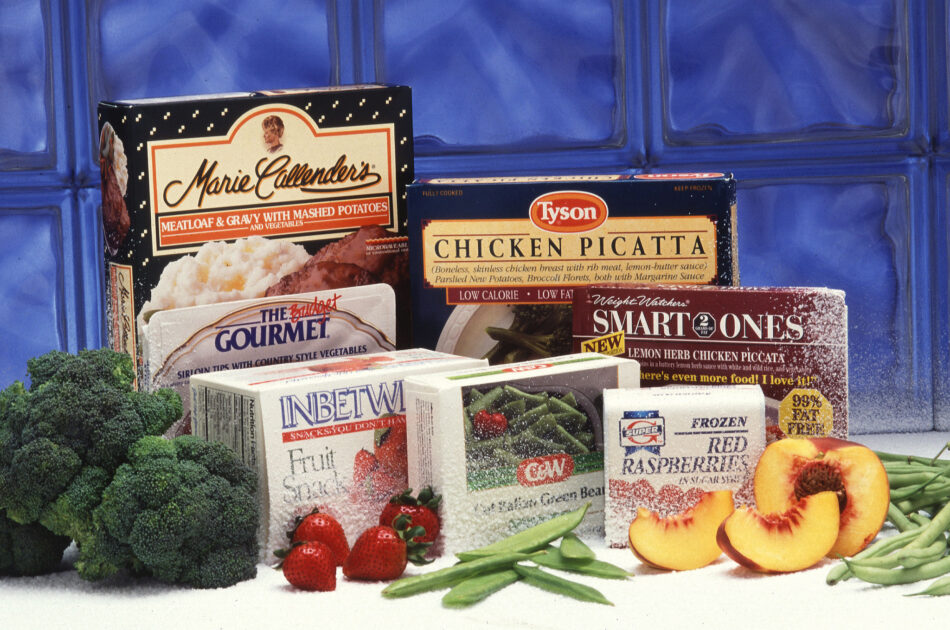Frozen food is popular because it stays fresh for a long time. The right packaging helps keep frozen food safe and tasty. It also prevents contamination and freezer burn. This article explains how packaging affects frozen food quality and safety.
Role of Packaging in Maintaining Frozen Food Quality
Packaging protects frozen food from air, moisture, and light. These factors can change the taste, texture, and color of food. If packaging is poor, food can get spoiled faster.
Proper packaging keeps food fresh and maintains its original condition. It prevents ice crystals from forming inside food. These crystals can change the texture and taste. Good packaging also stops the absorption of odors from other foods in the freezer. This helps maintain the true flavor of frozen products.
Different packaging materials work best for different foods. Some materials block moisture better, while others provide extra strength. Choosing the right material helps in keeping food in good condition for a long time.
The Future of Frozen Food Packaging
Technology is improving frozen food packaging. Smart packaging is being developed to monitor food freshness. These packages change color if food goes bad. This helps consumers know when to discard unsafe food.
More companies are working on improving sustainability. They are using plant-based packaging materials. These materials break down easily and reduce plastic waste.
Innovations in packaging will continue to improve food quality and safety. With better packaging, frozen food will remain fresh, safe, and more convenient for consumers. If you are looking for more information about packaging, visit us for more details.
Protection Against Freezer Burn
Freezer burn happens when frozen food loses moisture. It creates dry and tough spots on the food. This affects the taste and texture. Packaging plays a key role in preventing freezer burn.
Good packaging keeps air away from food. Vacuum-sealed bags are great because they remove air completely. Plastic wraps and aluminum foil also help by creating a barrier. The less air exposure, the lower the chances of freezer burn.
Using high-quality materials makes a big difference. Thick plastic wraps and double-layered packaging offer better protection. They help food stay fresh for a long time.
Preventing Contamination and Bacterial Growth
Frozen food must be safe to eat. Proper packaging prevents contamination. It also reduces the risk of bacteria growing on food.
Food packaging must be airtight. If air enters, bacteria and mold can grow. This can make food unsafe to eat. Sealed packaging also prevents exposure to harmful substances from the environment.
Packaging should also be resistant to punctures and leaks. If packaging is damaged, bacteria can enter. Sturdy materials like polyethylene and laminated films work well. They offer strong protection against contamination.
Influence of Packaging on Nutrient Retention
Frozen food should keep its nutrients. Packaging helps in preserving vitamins and minerals. If food is exposed to air and light, nutrients can break down.
Opaque packaging is better because it blocks light. Transparent packaging allows light to pass through, which can reduce nutrients over time. Oxygen-barrier films also help because they prevent oxidation. This process can cause loss of vitamins, especially vitamin C.
Proper sealing also plays a role. If packaging is not sealed well, ice crystals form inside. These crystals damage the food’s structure, leading to nutrient loss. High-quality packaging helps keep food healthy and fresh.
Types of Packaging Materials for Frozen Foods
Different materials are used for packaging frozen food. Each type has its benefits.
- Plastic Films: These are flexible and provide a strong barrier against moisture and air.
- Aluminum Foil: It blocks light and provides insulation, keeping food frozen longer.
- Cardboard Boxes: These are used for bulk packaging and offer moderate protection.
- Vacuum-Sealed Bags: These remove air completely, preventing freezer burn and keeping food fresh.
- Laminated Films: These combine different materials to provide strong protection.
The choice of material depends on the type of food. For example, meats need vacuum-sealed packaging, while frozen vegetables do well in plastic bags.
Packaging Design and Convenience for Consumers
Packaging should be easy to use. Consumers prefer packaging that is simple to open and reseal. Good design makes storage more convenient.
Resealable bags are popular because they keep food fresh after opening. Easy-tear packaging also helps in reducing waste. Single-serving packs make meal preparation simple and prevent unnecessary food waste.
Packaging should also have clear labeling. Labels should show storage instructions, expiration dates, and nutritional information. This helps consumers make informed choices about their food.
Environmental Impact of Frozen Food Packaging
Sustainability is important in packaging. Many frozen food packages are made from plastic, which is not eco-friendly. However, new materials are being developed to reduce waste.
Biodegradable packaging is a great option. It breaks down naturally and does not harm the environment. Recyclable packaging also helps in reducing waste.
Consumers prefer brands that use sustainable packaging. Companies that use eco-friendly materials build trust with their customers. Sustainable packaging is good for both the environment and business.
Temperature Control and Packaging Efficiency
Temperature control is key in frozen food storage. Packaging must be designed to withstand freezing temperatures. It should not crack or break under extreme cold.
Insulated packaging helps maintain the right temperature. It prevents temperature fluctuations that can spoil food. For example, gel packs and thermal liners are used for shipping frozen food. They keep food frozen for a longer time.
Proper sealing also prevents ice buildup. If packaging allows moisture inside, ice can form. This affects food quality. High-quality packaging ensures that food stays frozen until it is ready to be used.
Conclusion
The right packaging plays a big role in frozen food quality and safety. It prevents freezer burn, contamination, and nutrient loss. Choosing high-quality materials helps maintain food freshness. Sustainable packaging is becoming more popular, reducing environmental impact. Proper packaging ensures frozen food remains safe and nutritious for consumers.





